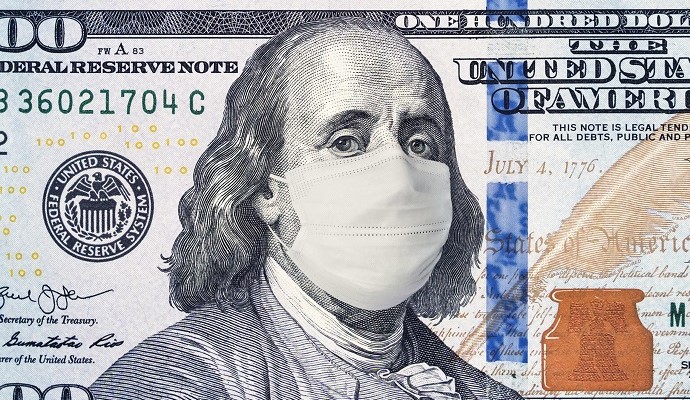Volume Declines Drive Hospital Operating Margins Down 282% in April
April was the worst month ever for hospital finances, as COVID-19 continued to impact volumes, revenue, and ultimately hospital operating margins, Kaufman Hall reports.

Source: Getty Images
- In the first full month hospitals battled the effects of the COVID-19 pandemic, hospital operating margins were down by 282 percent compared to the same period last year and 326 percent below budget, healthcare consulting firm Kaufman Hall recently reported.
Plummeting volumes and revenues resulted in a median operating margin of -29 percent in April, revealed the May issue of the firm’s National Hospital Flash Report, which draws on April data from more than 800 hospitals.
Meanwhile, the median operating earnings before interest, taxes, depreciation, and amortization (EBITA) margin ended the month at -19 percent despite an infusion of $50 billion in funding from the Coronavirus Aid, Relief, and Economic Security (CARES) Act. The margin was down by 174 percent compared to the same period last year and 191 percent below budget, the report stated.
“April was the worst month ever for hospital finances,” stated Jim Blake, managing director at Kaufman Hall. “Our nation’s hospitals are in a perilous position. They are serving as the frontlines of our battle against this virus, but the pandemic is threatening their fundamental financial viability at a time when we need them most.”
The effects of the COVID-19 pandemic especially impacted hospital volumes, the report showed.
Surgical volumes experienced the greatest decline, with operating room minutes falling by 61 percent compared to April 2019 and more than triple the declines observed the previous month.
Overall discharges also decreased, with hospitals facing an average 30 percent decline year-over-year and 23 percent decline month-over-month. Meanwhile, adjusted discharges fell by 41 percent year-over-year and 34 percent month-over-month. The metrics both came in below budget at -31 percent and -43 percent, respectively.
Other significant volume declines included adjusted patient days (-39 percent year-over-year and -30 percent month-over-month) and emergency department visits (-43 percent year-over-year and -36 percent month-over-month).
Average length of stay was the only volume metric in the report that saw an increase in April. The average length of stay increased by 5 percent compared to March but was down less than 1 percent year-over-year.
Steep declines in hospital volumes can be attributed to COVID-19. In April, hospitals were forced to cancel or postpone elective, non-emergent services per government orders and efforts to minimize exposure of the highly contagious virus. Average length of stay may also be up due to longer inpatient admissions for COVID-19 patients.
Overall declines in volumes had a significant impact on hospital revenue. The report showed that total gross revenue was down by 30 percent compared to April 2019 and 19 percent compared to March. The metric came in 33 percent below budget.
Hospital expenses did decline in April, falling 7.4 percent year-over-year and 9.5 percent month-over-month. However, the slight declines did not keep up with falling volumes, the authors of the report stated. Per-patient expenses were also “stubbornly high” in April, they reported.
These findings suggested that efforts to cut costs through furloughs, pay cuts for executives, and other cost control measures were insufficient to offset lost volumes, and could have a greater impact on hospital finances in the near future.
“The road to recovery will be difficult, and our healthcare system will be forever changed,” Blake stated.
Most hospital and health system executives anticipate revenues to be lower at the end of 2020, with two-thirds of executives expecting decreases of 15 percent or more, according to a new Guidehouse analysis of a survey conducted by the Healthcare Financial Management Association.
"Healthcare has largely been insulated from previous economic disruptions, with capital spending more acutely affected than operations," said David Burik, partner and payer/provider consulting division leader at Guidehouse. "But this time may be different since the COVID-19 crisis started with a one-time significant impact on operations that is not fully covered by federal funding.”
Burik predicted that hospitals will face long-term decreases in commercial payment, as well as greater demand from caregivers and patients for more consumer-facing digital engagement tools, like telehealth services.
